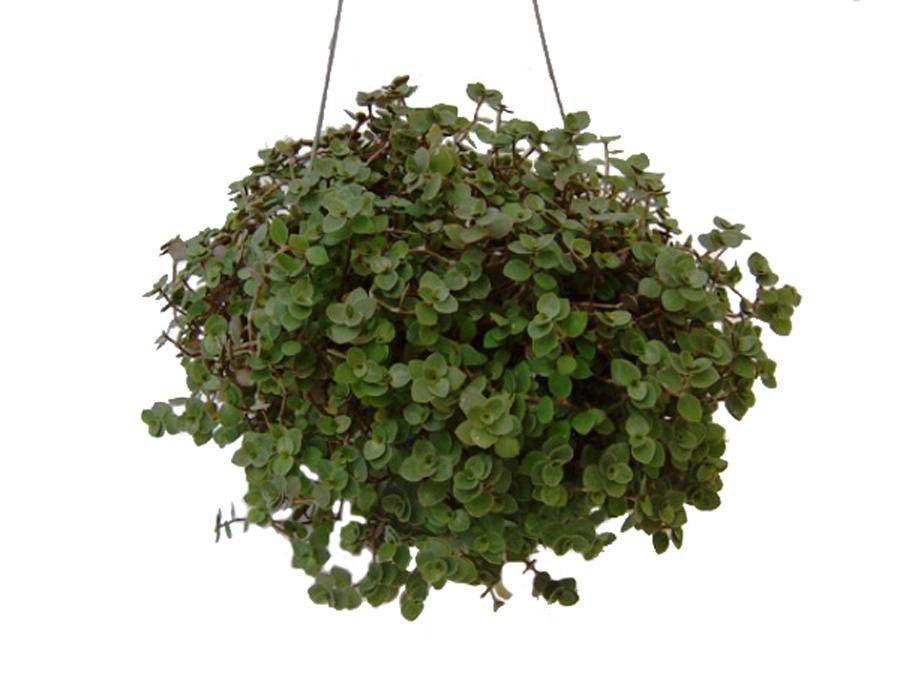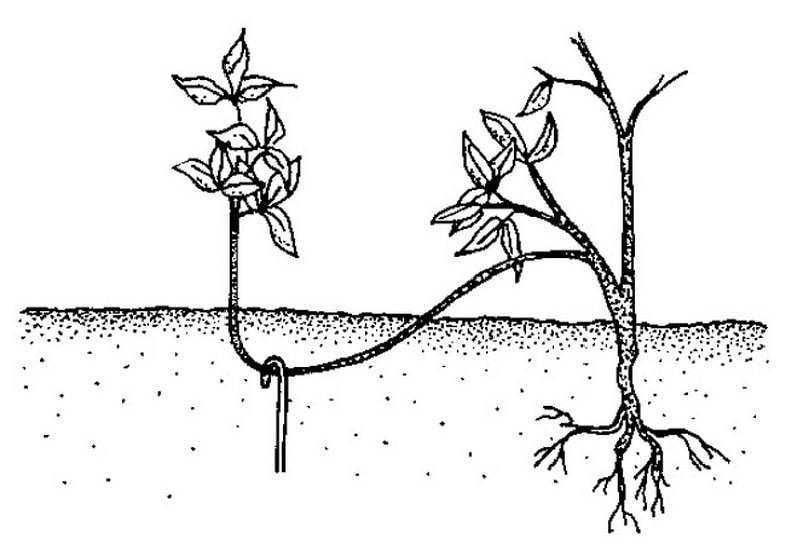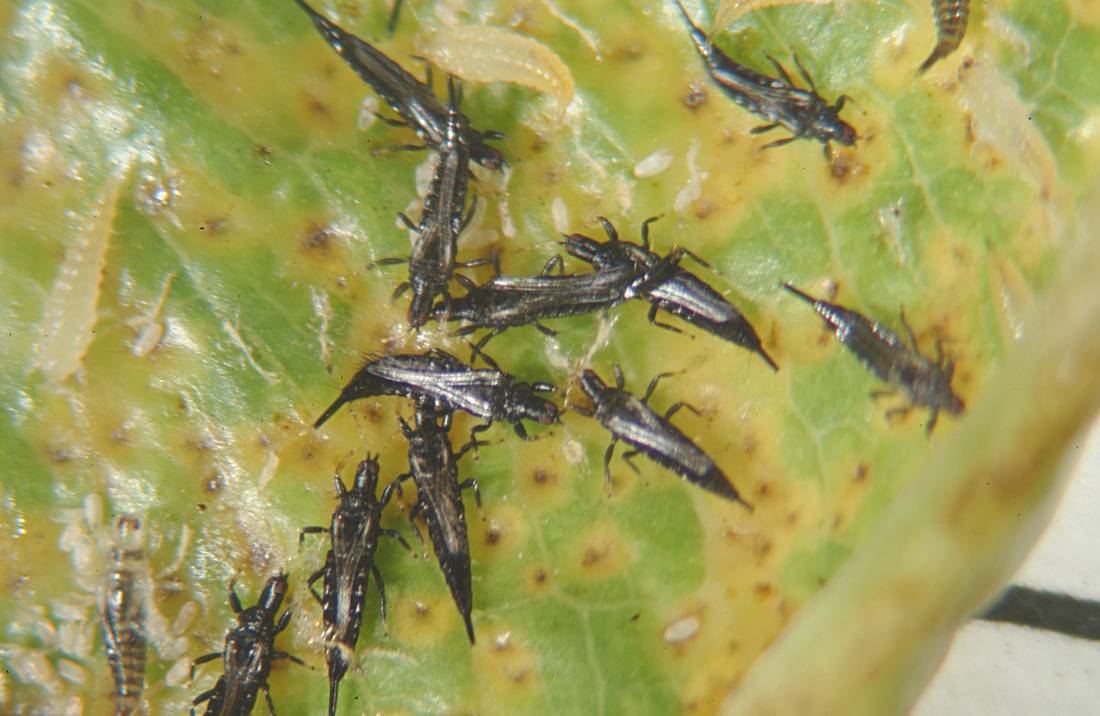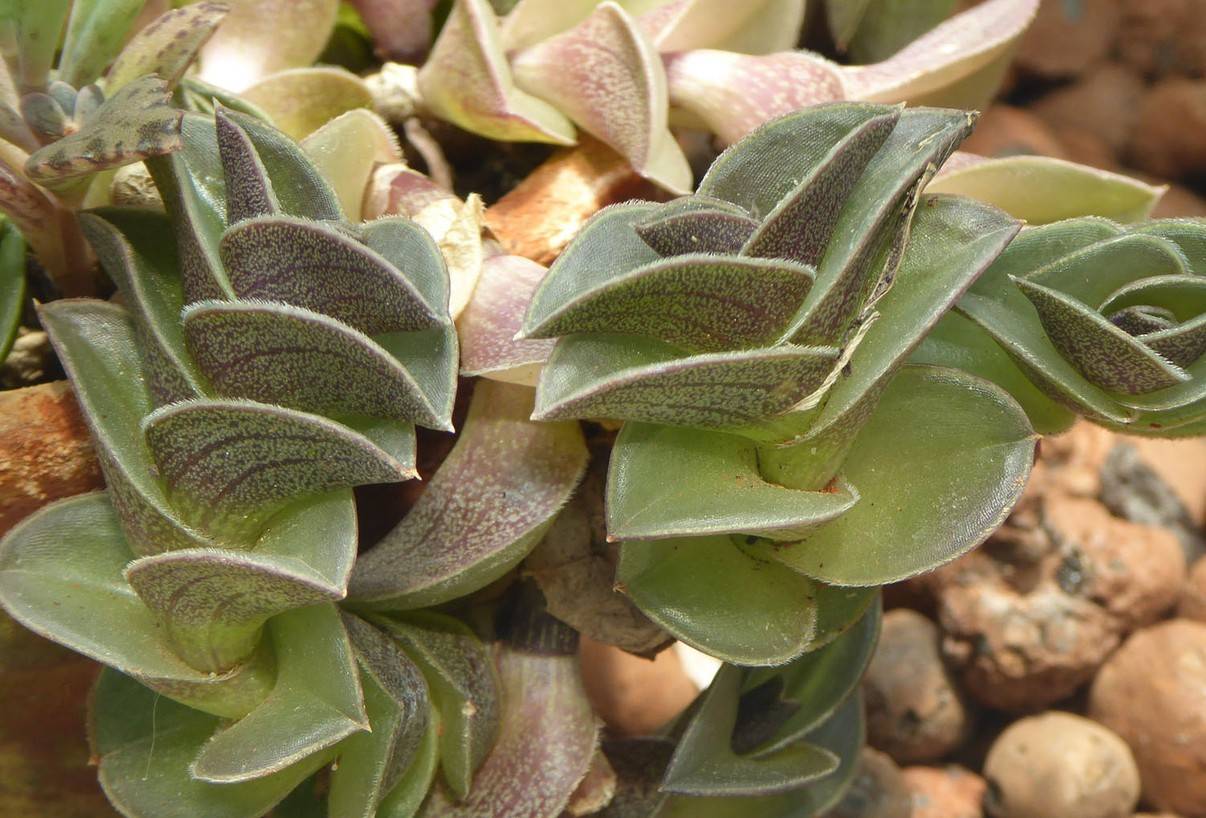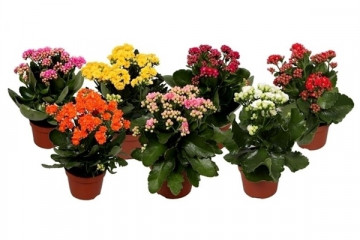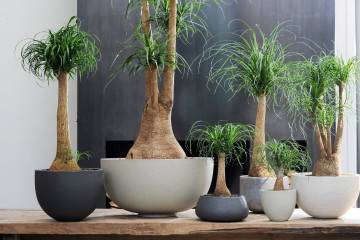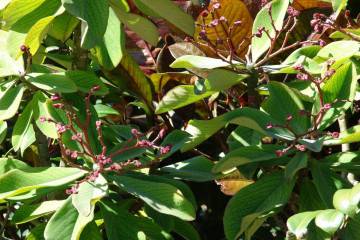Callisia creeping - home care
Content:
Callisia creeping is more often used as a houseplant due to its unpretentiousness and decorative appearance. The homeland of the flower is South America, tropical latitudes. The closest relative of the plant is the golden mustache, or fragrant callis.
What does it look like
The plant is decorative, the stem length does not exceed 15 cm. The shoot spreads, therefore it is placed in hanging pots. A more famous type of plant is fragrant callis, or golden mustache. The creeping variety is not a species like it.
If the first plant has oblong leaves up to 20-30 cm long, then the second is distinguished by small heart-shaped elements in two rows on the stem. The front surface is green, the back is lilac-violet. On the visible part, the leaf is dotted with small purple dots.
Callisia grows rapidly, in natural conditions, it covers the earth with a carpet. Prefers rocks and stones, forming garlands on them. Creeping callisia is not a look that looks like a golden mustache.
Callisia: home care
In order for callisia repens to please with intensive growth, it is necessary to provide optimal conditions for keeping.
Seat selection
It is best to place the flower in a spacious room where it will have enough light. The plant needs ventilation, so it is ventilated or placed in an air-conditioned room. In the summer, it is better to take it out to the loggia, terrace or other source of open air.
Temperature
Due to its tropical origin, Callisia is fragrant and other species prefer keeping in warm conditions. In summer, the optimal conditions are 20-25 ° С. In winter, the flower does not require a decrease in temperature, the plant is afraid of sudden changes. It will be enough to observe 16-20 ° С.
Lighting
Callisia loves lighted rooms, but to avoid direct sunlight. On the south side, the planter can be placed even far from the window. When placed in a westerly direction, it is best to hang the plant closer to the windowsill.
Watering
The mode of watering the callisia plant depends on the season. In the summer, when the evaporation of the liquid is more intense, watering should be frequent and abundant. A sign that it is time to add water to the pot is the drying out of the substrate to a depth of more than 4 cm.
Most of all, the flower likes rain or spring settled water. Watering is carried out on the periphery so that liquid does not get onto the leaf outlet. If water remains in the pan, then waterlogging of the plant will lead to decay of the roots.
Spraying
Because of the love for high humidity levels, callis creeping repens needs irrigation. If it is carried out with a coarse spray gun, then stains will remain on the plate. Therefore, it is better to purchase a fine spray nozzle.
Humidity
The recommended humidity level for a plant coincides with the optimal parameter in the house for finding people - 60-70%. To reach this level in temperate latitudes, it is necessary to use a humidifier. In order to maintain optimal conditions of detention, in the winter it is removed from the battery.
Priming
On sale there are ready-made soil mixtures for tradescantia, callisia, since they belong to the same family. The composition can be prepared by yourself. The requirements for the substrate are simple: it must be nutritious, not retain excess moisture, but also not be excessively porous. These parameters correspond to a mixture of peat, humus, sand, turf and leafy soil.
Top dressing
Callisia needs feeding during the active period. A complex fertilizer for tropical flowers is used. Fertilization is weekly from April to October.
Support
The plant grows quickly, so it needs to be supported. To do this, you can set a peg and tie the stem. If it is not there, you can tie a twine to the mount of the pots and start an escape along it.
To give the plant a given shape, you can put a dense wire frame in a pot crosswise. An escape will begin to start up on it and twine around it as planned.
Transfer
The plant gradually loses its leaves, which is a natural process. Therefore, not everyone sees the point in a callisia transplant. But until this moment, the flower will delight the owner with a long vegetative period.
A transplant to a young plant is required every year, then every 2-3. A spacious wide pot is suitable for a callis flower. The plant is taken out of the old container, transferred to a new one, which should be 2-3 cm larger than the previous one. The remaining volume is filled with soil, lightly tamped, watered.
Pruning
At the end of each active period, you need to cut off excess shoots, remove old and dried leaves and stems. You need to shorten the stem by 1/3 of the length.
How does it multiply
There are several ways to propagate a plant, they differ in the degree of simplicity and the speed of obtaining the final result.
Apical shoots
The simplest method is grafting. To get a vegetative shoot, you need to separate the part of the stem, consisting of two internodes, from the top. Further, this part is rooted in the soil or placed in water so that the shoot takes root.
Layers
The essence of the method is that part of the stem can be dug into the ground, and after a while it will take root. For implementation, you need the pot to be of large volume. The second option is to put another container next to it and place the sprout there. When the shoot takes root, it is cut off from the mother bush.
Dormant period
Intensive home care for callis is needed during the active period. After October, it is necessary to reduce watering, irrigation and fertilization. You can move the pot closer to the window, since the daylight hours are shorter and there may be little light on the callisia.
Possible problems
During growth, the plant can change color or appearance, which is associated with a violation of the conditions of detention. You can guess what the reason is by the signs of deviation.
Why do callisia leaves turn yellow
The appearance of yellow spots on the leaves indicates that callisia was not fed enough, and it lacks nutrients. If the leaves begin to dry from the tip, the problem is in the wrong placement of the pot. The sun gets on the plant and provokes burns.
Pests
The plant has a high resistance to pest infestation. Despite this, if the optimum humidity is not observed, the flower is attacked by thrips or red spider mites. The first are small insects called vesiculates.The spider mite reaches 1 mm in adult form, so it can be detected by looking like a spider web on the back of the leaf.
It is necessary to treat the flower from parasites with insecticides.
Common varieties
There are more than 20 types of callisia, 12 varieties are used for indoor breeding. The most common are presented below, they differ from each other in size, appearance, properties.
Callisia creeping (Callisia repens)
This callisia is small-leaved, the stem does not grow more than 10-15 cm. The leaf is green on the front side, purple on the back.
Differs in larger sizes of oval-shaped leaves with a pointed end. The leaves on the stem are located on both sides, closely adjacent to each other, resembling a boat.
Callisia fragrant, or golden mustache (Callisia Fragrans)
Callisia is fragrant, golden mustache, has medicinal properties, therefore it is widely used in folk medicine. It looks like a flower with elongated leaves of a juicy green color up to 30 cm long and up to 6. Shoots are thick, fleshy, on the plant are represented by two species. The first - leaves twisted in a spiral, vertically directed, the second - horizontally located rosettes with cilia along the edge. Thanks to these shoots, the plant takes root in the soil.
Callisia is graceful, or elegant
Callisia graceful is characterized by oval leaves with a sharp end up to 2 cm long and up to 1. Light longitudinal stripes are located on the outer surface. On the reverse side, the surface is violet-brown.
Care errors and problems
Errors in the care of callisia are associated with a violation of the rules for its maintenance. Knowing about the tropical origin of the flower, the owners put it on the window in the hottest place, in winter - closer to the radiator.
If there is a cat in the house, then you need to protect the flower from her teeth, since animals like to eat indoor flowers. It will die when placed in a draft. If temperature drops are allowed in winter, the leaves will lose moisture and become flabby. The sprouts will die.
Callisia is a plant from the genus Tradescantia that grows naturally in tropical latitudes. About 12 types of flowers are grown as a houseplant. Callisia propagates by cuttings and layering. Requires frequent watering and irrigation in the summer.
